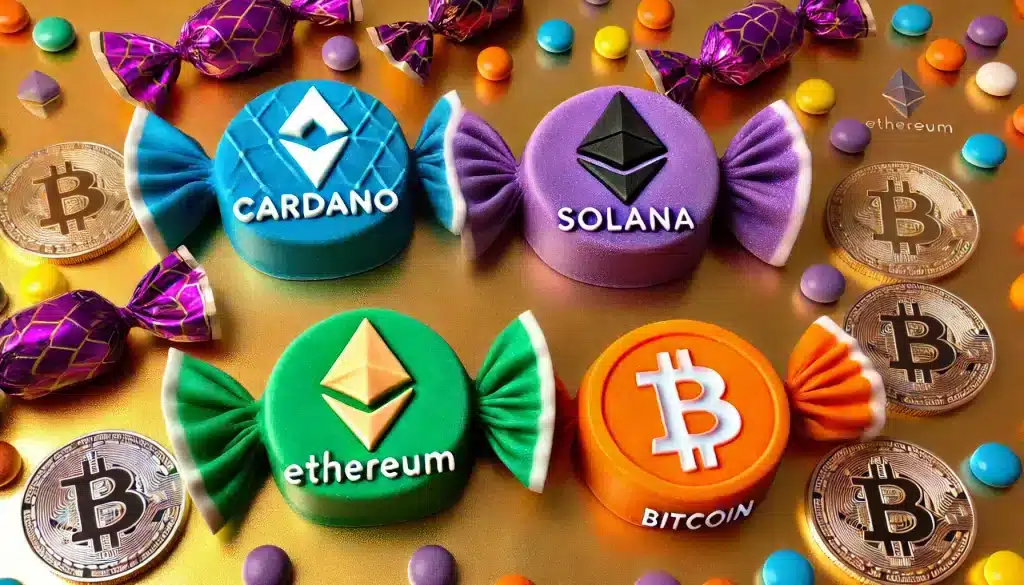Full Analysis of 4 Cryptocurrency Models: Cardano, Solana, Ethereum, and Bitcoin

Full Analysis of 4 Cryptocurrency Models: Cardano, Solana, Ethereum, and Bitcoin
If you want to understand the differences between various cryptocurrency models, then ADA whale (@cardano_whale) made a rather good analysis on X which we will dissect below. It’s clear ADA whale is a Cardona fan, still, his tweets are often just spot on.
In a series of tweets, ADA whale compared the governance, fee structures, supply dynamics, and economic models of four popular cryptocurrencies: Cardano (Coin A), a typical VC coin like Solana (Coin B), Ethereum (Coin C), and Bitcoin (Coin D). While the tweets are rather clear to understand, it might be good to dive a bit further in the details.
This is the tweet which was the reason for this article.
You buy coin A. You use it to participate in its digital economy at low but non-negligible fees. Owning it gives you a share of income generated by fees, voting rights on protocol upgrades, economic parameters, a treasury. The coin has fixed supply and slowly decreasing inflation
— ADA whale (@cardano_whale) July 6, 2024
Detailed Analysis of 4 Cryptocurrency Models
Let’s begin by dissecting the series of tweets, examining the governance models, fee structures, supply dynamics, and overall economic parameters of the mentioned cryptocurrencies: Cardano (Coin A), a typical VC coin like Solana (Coin B), Ethereum (Coin C), and Bitcoin (Coin D).
- Coin A:
- Digital Economy Participation: Requires fees that are low but non-negligible.
- Income Share: Coin holders receive a portion of income from fees.
- Governance: Offers voting rights on protocol upgrades and economic parameters.
- Treasury: Maintains a treasury for fund management.
- Supply and Inflation: Fixed supply with slowly decreasing inflation.
- Coin B:
- Digital Economy Participation: Fees are negligible.
- Income Share: Provides a share of low income.
- Governance: No voting rights.
- Supply and Inflation: Unlimited supply with high, unpredictable inflation. The market cap can grow even if the price remains unchanged.
- Perception: Labeled as a typical VC (Venture Capital) coin, indicating skepticism about its long-term value despite interesting technology.
- Coin C:
- Digital Economy Participation: Fees are high to exorbitant.
- Income Share: Coin holders share income generated by high fees.
- Governance: No voting rights.
- Supply and Inflation: Variable supply that tends to become deflationary with high usage, which drives fees up.
- Coin D:
- Digital Economy Participation: Requires fairly high fees.
- Income Share: Not mentioned explicitly, implying income might not be a significant aspect.
- Governance: No voting rights.
- Supply and Inflation: Fixed supply with slowly decreasing inflation. Described as the cornerstone of the crypto space, indicating a strong foundational value.
- Economic Parameters: Rigid and unchangeable.
ADA Whale’s Conclusions
With the data provided above ADA whale says that his preferred coins would be Cardano, Ethereum, and Bitcoin, adding that they are solid investments. The reasons are these:
- Economic Models: The three cryptocurrencies have robust economic structures that contribute to their long-term stability and growth potential.
- Governance Mechanisms: Cardano, in particular, offers voting rights and participatory governance, allowing investors to have a say in the protocol’s future developments.
At the same time he is quite skeptical towards a typical VC coin (Coin B eg. Solana), which he describes as a typical venture capital-backed coin. Despite acknowledging that the technology behind this coin is interesting, he questions the rationale for owning it. The lack of voting rights and the presence of high, unpredictable inflation contribute to his doubts about its long-term value.
ADA whale’s analysis suggests that Cardano, Ethereum, and Bitcoin stand out as reliable investments due to their solid economic models and governance mechanisms, while he remains cautious about VC-backed coins like Solana.
Further Implications
There are a few additional elements to consider regarding ADA whale’s comments, which make sense.
- Governance and Participation: Coins offering voting rights and participation in governance (like Coin A) might attract investors interested in influencing the protocol’s future.
- Supply and Inflation Dynamics: Fixed supply and predictable inflation (Coins A and D) may be seen as attractive features for maintaining value stability.
- Fee Structures: The fee structure impacts user participation and potential income. High fees might deter users but can generate significant income for coin holders.
- Perceived Value: Coins with fixed or deflationary supply and robust economic models (Coins A, C, and D) are perceived as having stronger long-term value compared to those with unlimited supply and unpredictable inflation (Coin B).
It’s not often that you encounter interesting threads on X regarding crypto, but this one certainly was and should be an eye opener to many.
Note that you will not find a mention of memecoins because they typically belong to a category of cryptocurrencies that are often created as jokes or parodies rather than for functional purposes. They often lack the robust economic models, governance mechanisms, and long-term value propositions of more established cryptocurrencies like Cardano, Ethereum, and Bitcoin. While some memecoins, like Dogecoin, have gained popularity and market capitalization, they are generally considered high-risk investments due to their speculative nature and lack of inherent utility.







